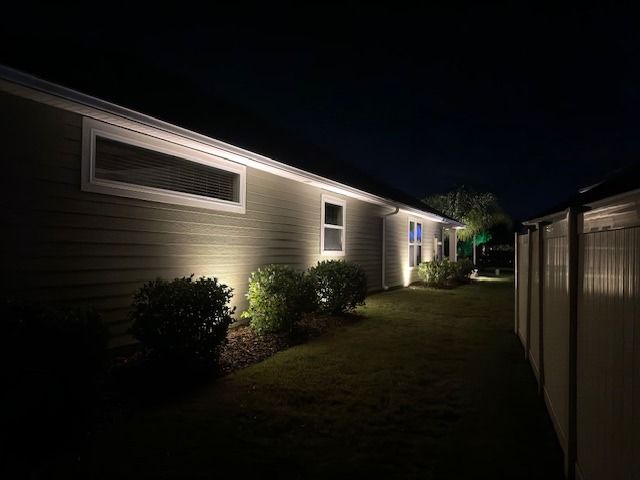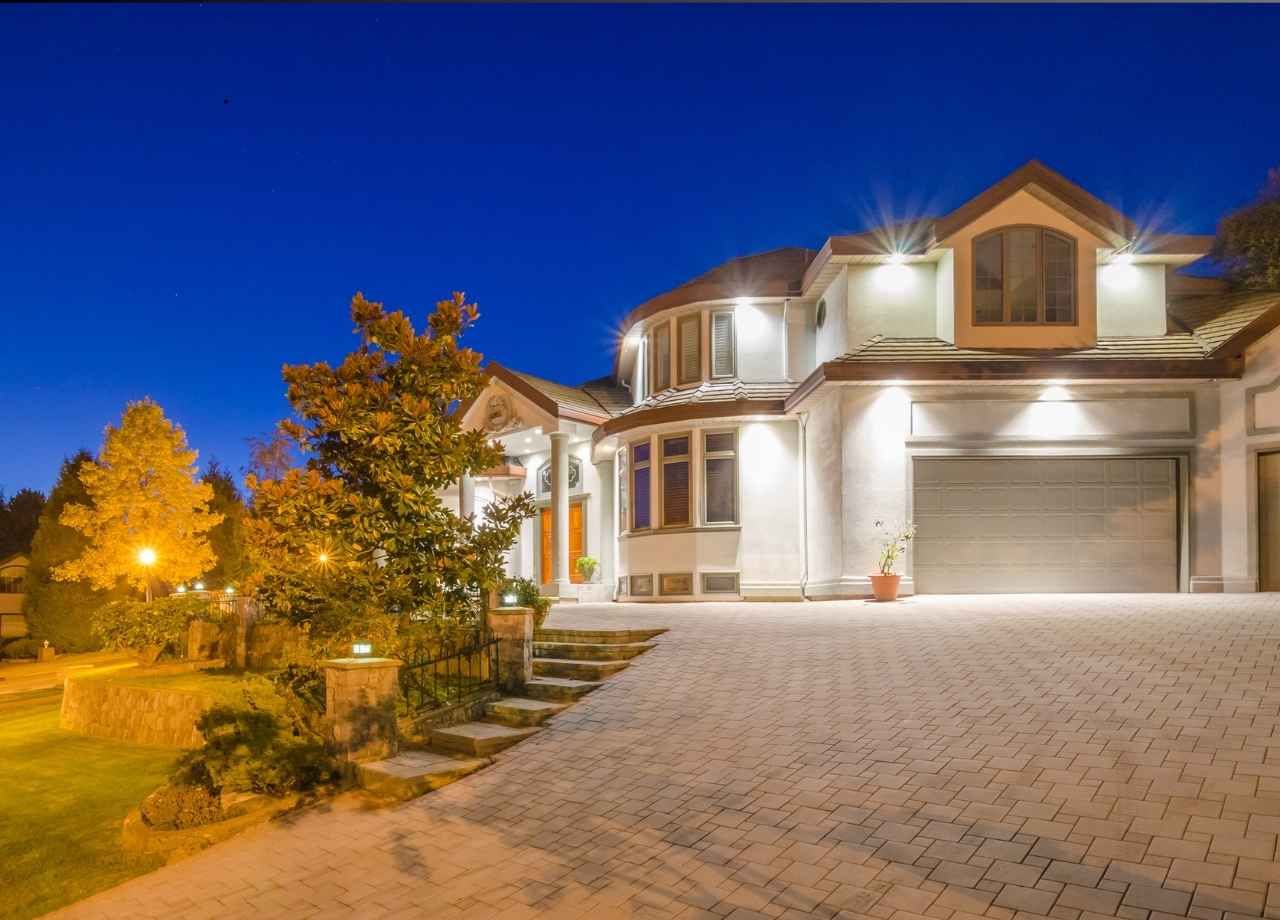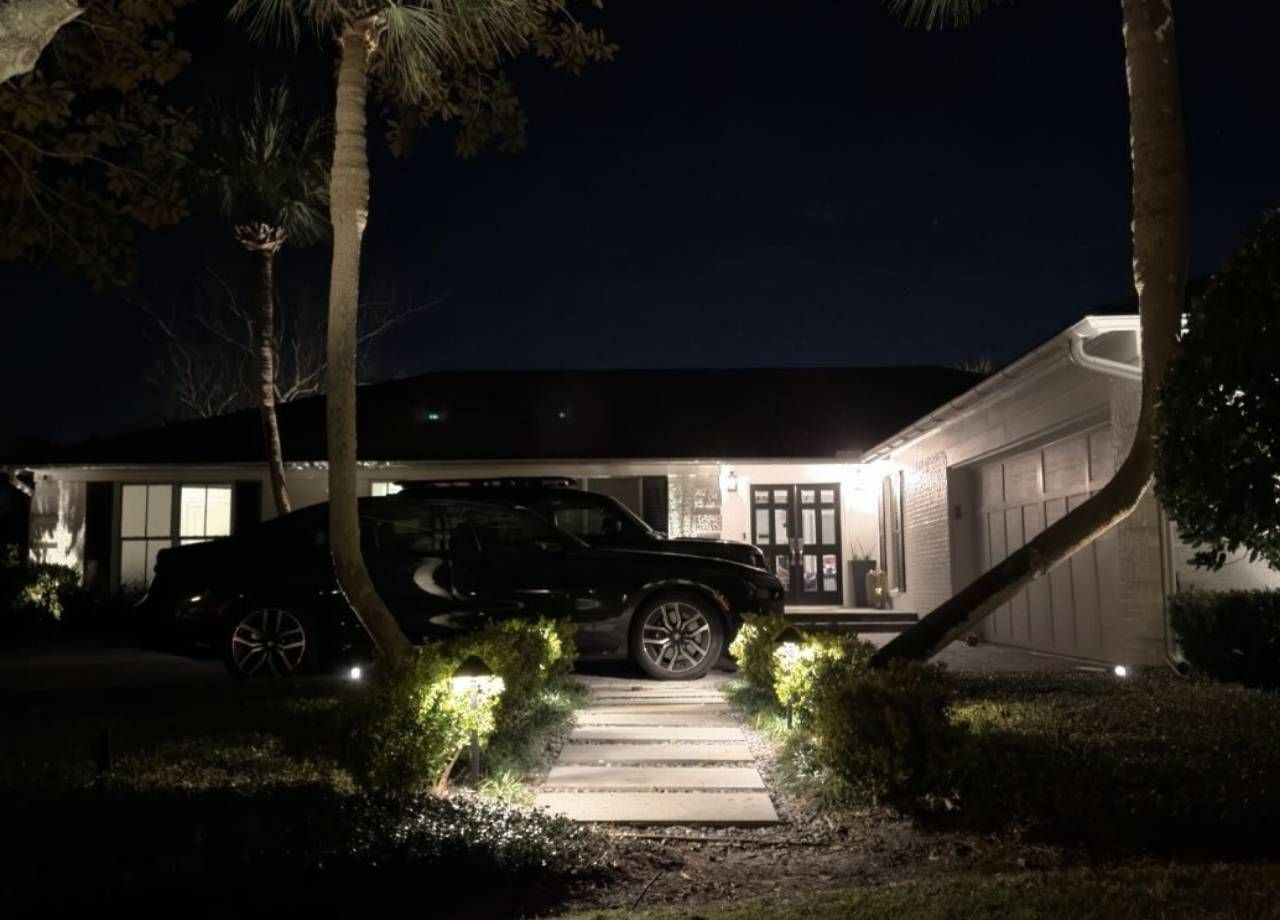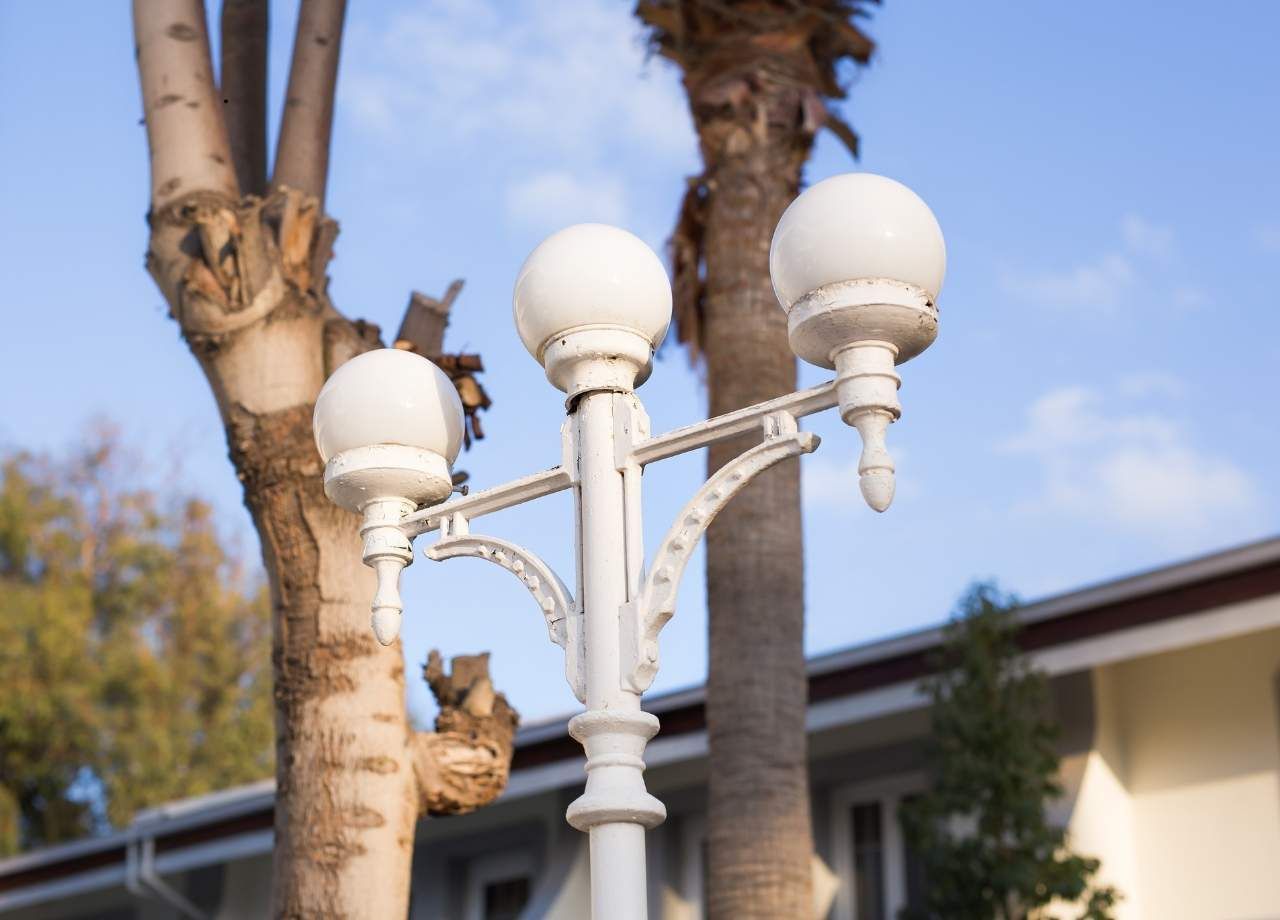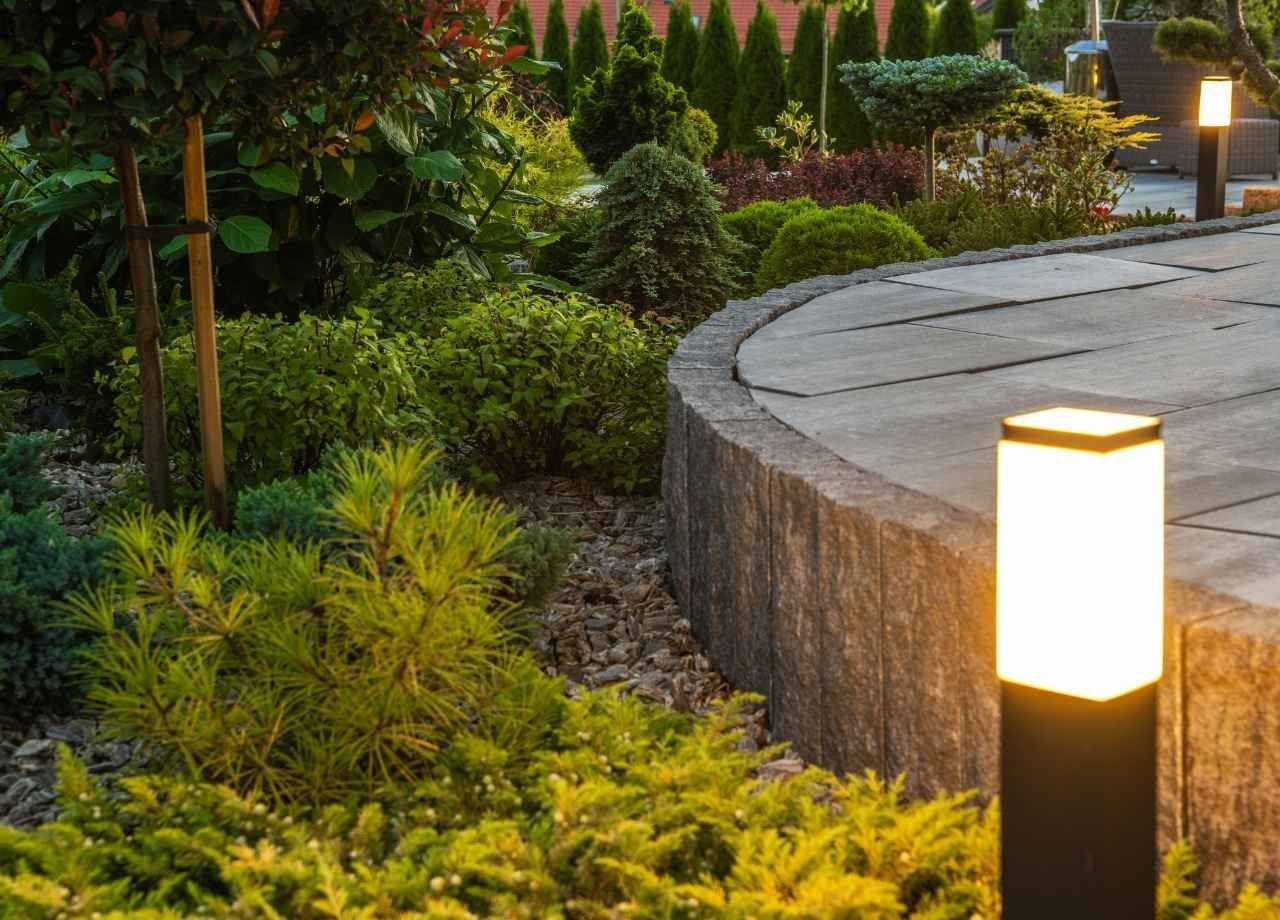Outdoor Hanging Lighting Ideas to Elevate Your Landscape Design
Outdoor hanging lights serve both a decorative and functional purpose, casting light where it’s needed most while enhancing the visual appeal of patios, pergolas, porches, and garden structures. With modern advancements in lighting design and energy efficiency, today’s outdoor hanging fixtures are more versatile than ever. Homeowners are embracing these lighting features not just as accents, but as statement pieces that define their exterior living spaces.
At Aloha Outdoor Lighting, we specialize in designing and installing custom outdoor lighting systems throughout Jacksonville, FL. From classic pendant styles to contemporary lantern installations, our tailored approach ensures each project fits seamlessly into the property's architecture and lifestyle goals.
Where Hanging Lights Belong in an Outdoor Setting
Strategic placement matters just as much as fixture choice. Outdoor hanging lights should provide balanced illumination and integrate with their surroundings, both physically and stylistically. Covered patios and porches are obvious candidates, offering protection from the elements and natural attachment points. Hanging lights under these structures create an inviting ambiance, especially when paired with dimmable or layered lighting options.
Pergolas and gazebos benefit from suspended lighting because of their open framework. Here, chain-hung lanterns or sculptural pendants can drop down to eye level without obstructing airflow. Garden archways, tree branches, and horizontal beams across outdoor kitchens can also serve as anchors for smaller, decorative lights that support specific themes like Mediterranean, rustic, or modern coastal.
Entrances and walkways gain aesthetic and practical value from hanging lights. Installing a hanging lantern by a front entry or gate helps guide guests after dark, while boosting curb appeal. For larger entry zones, multi-light fixtures or double pendants on either side of a pathway create symmetry and enhance visibility.
Choosing the Right Fixture for Each Area
Each outdoor space comes with its own set of design requirements, making fixture selection critical. Pendant lights are ideal for covered porches and outdoor dining spaces. Their downward cast delivers focused task lighting, especially useful over tables and prep surfaces. Choose weather-resistant materials like powder-coated metals or marine-grade stainless steel to ensure longevity in Florida's coastal climate.
Lantern-style fixtures blend well with colonial, farmhouse, or traditional architecture. Many now come in LED-integrated options, removing the need for bulb replacements and reducing maintenance. Hanging lanterns work beautifully in garden zones or on pergolas where vintage charm adds personality.
Contemporary outdoor chandeliers bring a dramatic, upscale look to open-air lounges or poolside cabanas. These are often fabricated with energy-efficient LED elements and shatter-resistant glass, designed to hold up against wind and humidity.
String lighting has surged in popularity over the past five years, especially in residential backyards. While technically not "hanging fixtures" in the traditional sense, these suspended strands offer similar atmospheric benefits. Opt for commercial-grade strings with secure suspension hardware and LED Edison-style bulbs for better light quality and durability.
Style Pairings That Complement the Architecture
A key part of designing with hanging lights involves matching the fixture's aesthetic with the style of your home and landscape. Coastal and beachside properties often pair well with driftwood accents, cage lanterns, or whitewashed metal finishes that reflect natural elements and sunlight. Fixtures with seeded or frosted glass diffuse brightness, adding softness to ocean-facing patios.
Traditional southern homes with wraparound porches or brick columns benefit from oil-rubbed bronze or copper lanterns. These materials patina over time, creating a lived-in charm that feels authentic. Choose shapes that mimic historical gas lanterns or French Quarter designs for a cohesive look.
Modern and minimalist exteriors do best with geometric or industrial hanging lights. Think matte black finishes, clean lines, and neutral tones that don’t distract from architectural details. In these spaces, lighting can be both art and utility, offering crisp illumination with sleek styling.

Light Layering with Hanging Fixtures
One of the most effective ways to utilize outdoor hanging lights is through layering. Combining ambient, task, and accent lighting gives flexibility across different times of day and types of activity. Hanging lights usually fall into the ambient category, but depending on placement and intensity, they can also serve as task lights.
Use pendant lights to anchor a seating or dining zone, then add path lights or hardscape lighting nearby to prevent dark voids. If the hanging light has an adjustable chain or stem, customize the drop height to reduce glare and improve spread. In covered areas, wall sconces and recessed ceiling lights can pair with hanging fixtures to fill in the shadows and keep the mood comfortable.
Timers and dimmers play an important role in layered systems. Smart lighting controls make it possible to adjust intensity levels automatically at sunset or when a guest arrives. Many high-quality outdoor hanging lights are compatible with Bluetooth or Wi-Fi controllers, streamlining management across larger properties.
Weatherproofing and Maintenance Considerations
Florida's climate demands outdoor fixtures that can handle humidity, salt air, and occasional storms. When choosing a hanging light, always verify its UL wet or damp rating, depending on placement. A damp-rated fixture may be fine for a covered porch, but open-air pergolas need wet-rated models.
Mounting hardware must also be corrosion-resistant. Galvanized steel or marine-grade aluminum provides added strength and resists rust. If the fixture includes glass components, opt for tempered or acrylic panels instead of regular glass, which can shatter during wind gusts.
Regular maintenance extends the life of hanging lights. Wipe down surfaces monthly, inspect chains or hanging stems for wear, and tighten any loose connections. Reapplying protective coatings to metal finishes once or twice a year helps prevent oxidation, especially in coastal environments.
Designing for Seasonal and Event Use
Outdoor hanging lights offer great flexibility for seasonal or event-specific updates. Swapping out light bulbs for color-changing LEDs during holidays or backyard parties brings new energy to your setup without altering the core structure. Some smart bulbs allow remote programming to cycle through color temperatures and intensities, adding fun or formality depending on the occasion.
Removable hooks or magnetic mounts let you hang temporary decorative lights around permanent fixtures. Think paper lanterns for a summer evening, or vintage filament bulbs in mason jars for a fall dinner. These additions keep the space visually interesting year-round.
Closing Thoughts
Outdoor hanging lights have evolved into essential components of exterior design. Beyond function, they contribute style, ambiance, and structure to landscapes large and small. With today’s durable materials, smart features, and diverse aesthetics, there’s a solution for nearly every need.
Whether you're planning a full outdoor renovation or enhancing a single corner of your yard, integrating hanging lighting the right way can make the space feel intentional and complete. At Aloha Outdoor Lighting, we help Jacksonville homeowners turn these ideas into customized lighting plans that elevate every outdoor experience.

